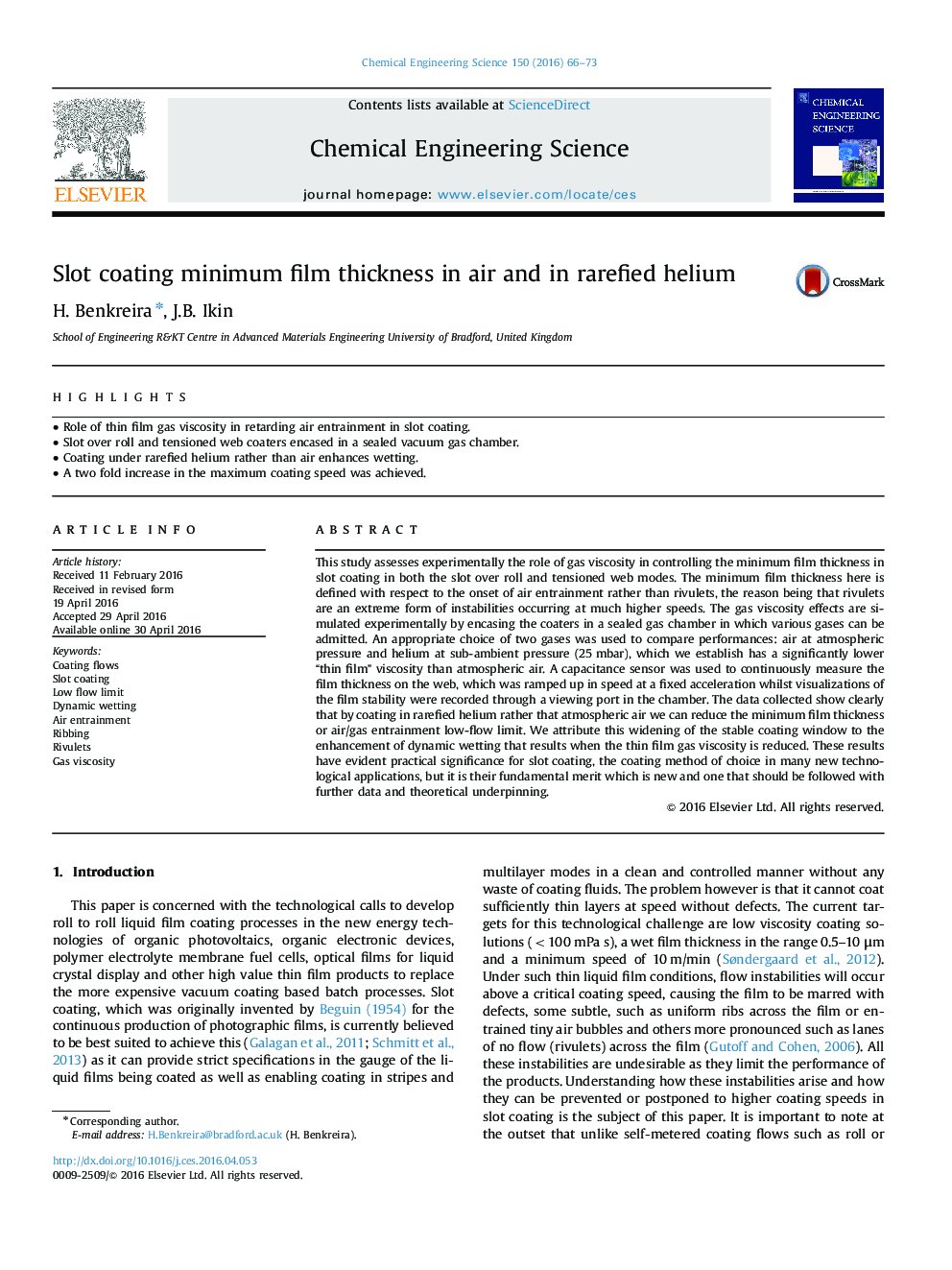| Article ID | Journal | Published Year | Pages | File Type |
|---|---|---|---|---|
| 154361 | Chemical Engineering Science | 2016 | 8 Pages |
•Role of thin film gas viscosity in retarding air entrainment in slot coating.•Slot over roll and tensioned web coaters encased in a sealed vacuum gas chamber.•Coating under rarefied helium rather than air enhances wetting.•A two fold increase in the maximum coating speed was achieved.
This study assesses experimentally the role of gas viscosity in controlling the minimum film thickness in slot coating in both the slot over roll and tensioned web modes. The minimum film thickness here is defined with respect to the onset of air entrainment rather than rivulets, the reason being that rivulets are an extreme form of instabilities occurring at much higher speeds. The gas viscosity effects are simulated experimentally by encasing the coaters in a sealed gas chamber in which various gases can be admitted. An appropriate choice of two gases was used to compare performances: air at atmospheric pressure and helium at sub-ambient pressure (25 mbar), which we establish has a significantly lower “thin film” viscosity than atmospheric air. A capacitance sensor was used to continuously measure the film thickness on the web, which was ramped up in speed at a fixed acceleration whilst visualizations of the film stability were recorded through a viewing port in the chamber. The data collected show clearly that by coating in rarefied helium rather that atmospheric air we can reduce the minimum film thickness or air/gas entrainment low-flow limit. We attribute this widening of the stable coating window to the enhancement of dynamic wetting that results when the thin film gas viscosity is reduced. These results have evident practical significance for slot coating, the coating method of choice in many new technological applications, but it is their fundamental merit which is new and one that should be followed with further data and theoretical underpinning.
